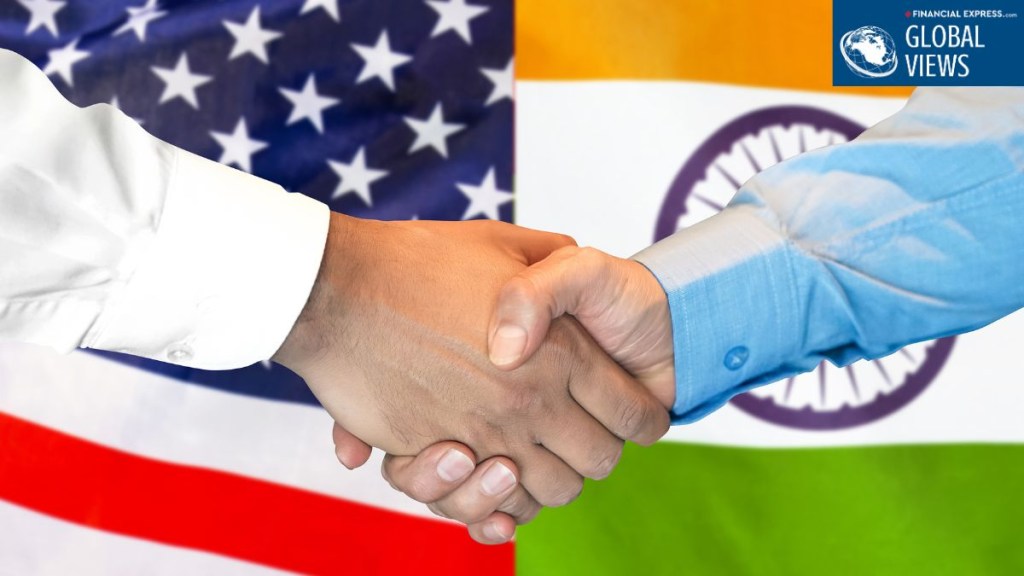By Himanshu Jaiswal and Badri Narayanan Gopalakrishna
In another setback to trade liberalization and global economic openness, the US plans to impose new restrictions on its service imports, or the outsourcing of service jobs. What if every time a U.S. company hired an Indian coder, designer or analyst, Washington took a 25 per cent cut? That’s the idea behind the new Halting of International Relocation of Employment (HIRE) Bill introduced in the U.S. Senate on September 5 by Republican lawmaker Bernie Moreno.
What is the HIRE Bill?
The HIRE Bill seeks to impose a 25% tax on any outsourcing payment. The term ‘outsourcing payment’ includes any premium, fee, royalty, service charge, or any other payment made with respect to labor or services the benefit of which is directed to consumers in the United States. The tax would be non-deductible under U.S. federal rules, making it even more costly for companies that depend on offshore partners. The Bill is still only a proposal and faces a long road through Congress, where many may question its feasibility and definitions. Yet, if passed in its present form which is full of ambiguity, it could come into force as early as January 2026.
How it may hurt India?
The HIRE Bill, whose core idea is to curb outsourcing projects and create local jobs, may have some detrimental impact on India, which exports around a quarter of its total services to the US alone. In 2023, India’s total services export to the US was worth 45 billion USD, prominently led by Computer, Consulting, R&D and Information services. Hence, the US being a significant services export partner of India, any demand-side shock in the US industry may jolt India’s economy as well. The highest contributing service sectors may be severely affected compared to other sectors as the first-order effect, while as the second-order effect, the allied sectors such as the real estate, infrastructure may also face some heat.
The economics of the HIRE Bill
Since the HIRE proposes a uniform tax of 25% across all foreign service providers (India, Philippines, China, Mexico etc.), the cost advantage of Indian services exports may not vanish altogether but may bring asymmetric effects because of several factors. Nature of service is one of them. Consulting and R&D services, which generally depend on skills and innovation rather than cost alone, are often contracted under long-term delivery models, while the post-sale services, coding, software testing, and debugging may be more cost-sensitive. The lack of qualified and skilled professionals in the US may be another factor. According to the US Chamber of Commerce, the US lacks STEM talent and needs to develop enough professionals to sustain economic growth and global competitiveness. Due to this, the reshoring or onshoring of service jobs would be a difficult shift for the US companies.
If U.S. firms can’t easily substitute offshore services, there will be very less changes in services demand. So, India’s competitiveness will erode somewhat, but not collapse. The real worry is margins and the inflow of new contracts or projects. If demand is relatively inelastic, the pain will be shared: Indian suppliers might trim fees, U.S. companies will pay more, and consumers may ultimately shoulder part of the cost. The only guaranteed winner is the US Treasury.
How may India deal with the HIRE Bill?
Though the HIRE Bill may not pose an immediate threat to India’s services industry, New Delhi should act proactively against this new form of protectionism. A quick policy response would be to bring the HIRE issue into the ongoing India–US trade negotiations. The deal could seek carve-outs or special treatment for cross-border services, ensuring payments to Indian firms aren’t subject to the full 25% tax. It might also include phased implementation or grandfathering of existing contracts to ease adjustment, along with ‘safe-harbor’ thresholds for small or high-value niche services. Finally, India could push for dispute-settlement provisions allowing challenges to any unilateral, extraterritorial taxes that breach the trade pact.
Asymmetric trade negotiation
The US currently has leverage as it has imposed high tariffs (50%) on many Indian goods, particularly due to India’s crude import policies. This is why India is under great pressure to make concessions (e.g., reducing tariffs, opening certain agricultural imports) to get a deal. If India makes large concessions on goods tariffs, including agriculture, the US may feel less incentive to offer generous carve-outs on services. It is learnt that as part of this deal, India may agree to import genetically modified Maize from the US, showing a change in the prolonged GM policy of India. If India is ready to shrink its policy space for its trading partners, it should do so in exchange for significant reciprocal benefits.
Conclusion
If the India-US trade agreement includes protective clauses, carve-outs, phased implementation, or dispute safeguards that significantly reduce the negative impact on Indian services firms, then the HIRE will be more symbolic than destructive for India. If India plays its cards well, it might negotiate a stronger shield for its services sector. That kind of India-US deal will be a comprehensive, symmetric, and welfare-improving deal for both contracting parties.
Himanshu Jaiswal is Research Fellow, and Dr. Badri Narayanan Gopalakrishnan is Founder and Director of Infisum Modeling.
Disclaimer: Views expressed are solely those of the author and not necessarily reflect the outlook of financialexpress.com.

